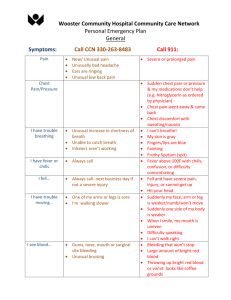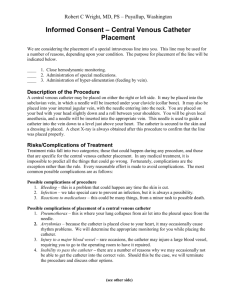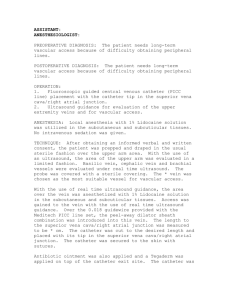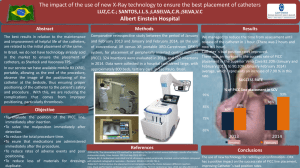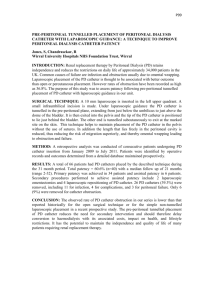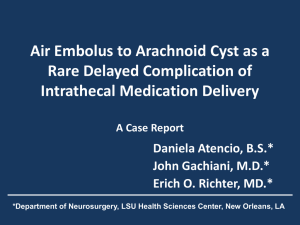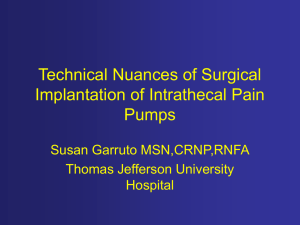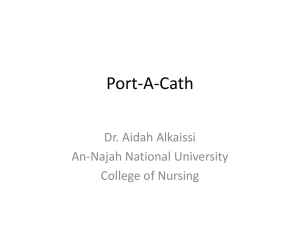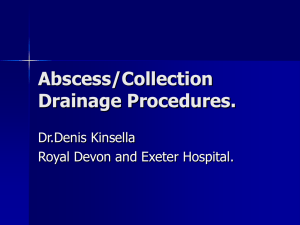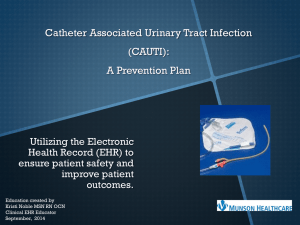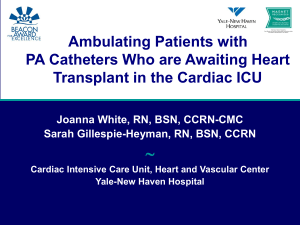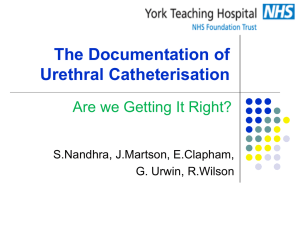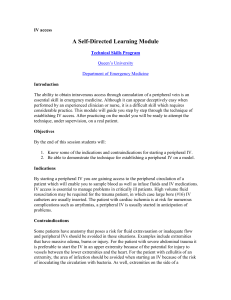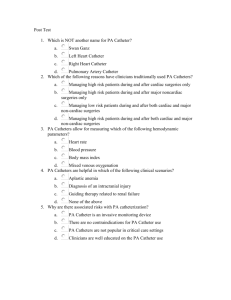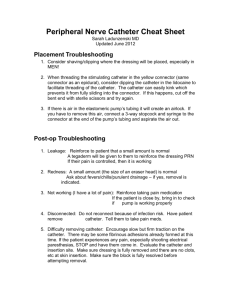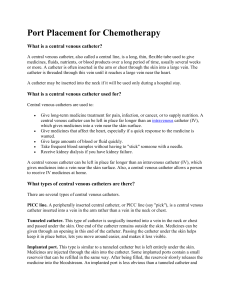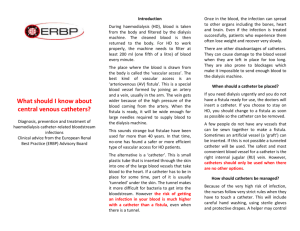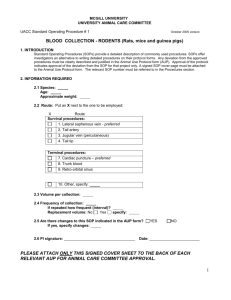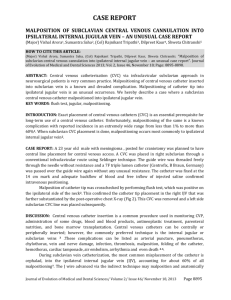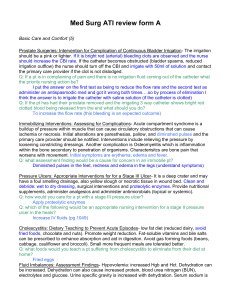Port a Cath placement - Colon & Rectal Care Center
advertisement
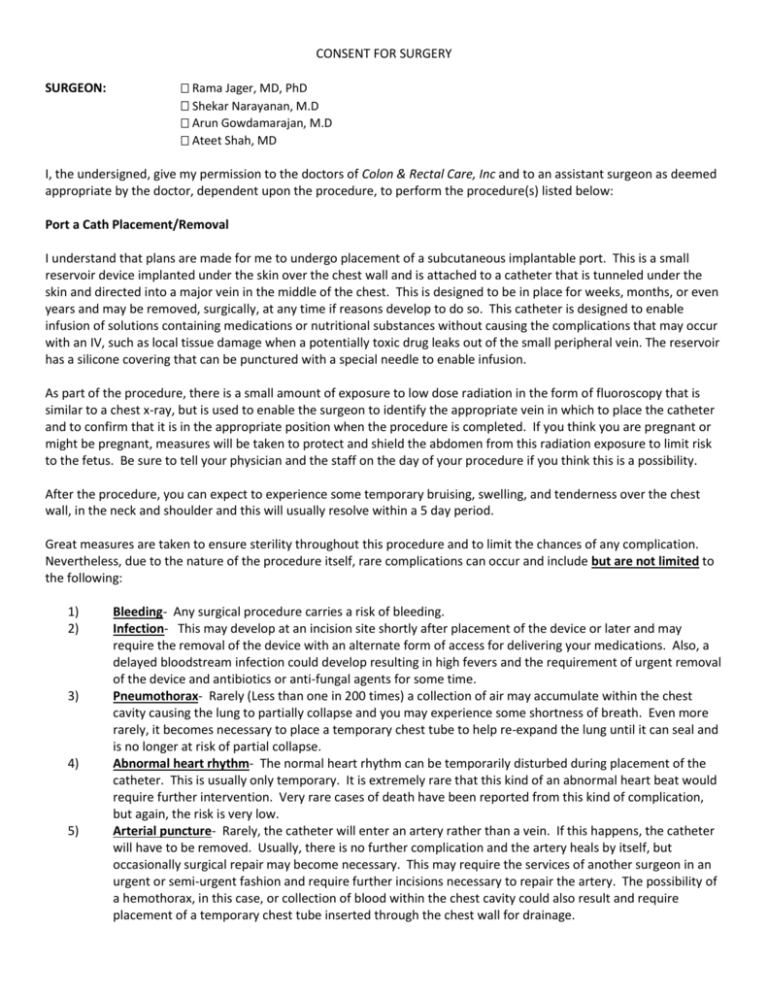
CONSENT FOR SURGERY SURGEON: Rama Jager, MD, PhD Shekar Narayanan, M.D Arun Gowdamarajan, M.D Ateet Shah, MD I, the undersigned, give my permission to the doctors of Colon & Rectal Care, Inc and to an assistant surgeon as deemed appropriate by the doctor, dependent upon the procedure, to perform the procedure(s) listed below: Port a Cath Placement/Removal I understand that plans are made for me to undergo placement of a subcutaneous implantable port. This is a small reservoir device implanted under the skin over the chest wall and is attached to a catheter that is tunneled under the skin and directed into a major vein in the middle of the chest. This is designed to be in place for weeks, months, or even years and may be removed, surgically, at any time if reasons develop to do so. This catheter is designed to enable infusion of solutions containing medications or nutritional substances without causing the complications that may occur with an IV, such as local tissue damage when a potentially toxic drug leaks out of the small peripheral vein. The reservoir has a silicone covering that can be punctured with a special needle to enable infusion. As part of the procedure, there is a small amount of exposure to low dose radiation in the form of fluoroscopy that is similar to a chest x-ray, but is used to enable the surgeon to identify the appropriate vein in which to place the catheter and to confirm that it is in the appropriate position when the procedure is completed. If you think you are pregnant or might be pregnant, measures will be taken to protect and shield the abdomen from this radiation exposure to limit risk to the fetus. Be sure to tell your physician and the staff on the day of your procedure if you think this is a possibility. After the procedure, you can expect to experience some temporary bruising, swelling, and tenderness over the chest wall, in the neck and shoulder and this will usually resolve within a 5 day period. Great measures are taken to ensure sterility throughout this procedure and to limit the chances of any complication. Nevertheless, due to the nature of the procedure itself, rare complications can occur and include but are not limited to the following: 1) 2) 3) 4) 5) Bleeding- Any surgical procedure carries a risk of bleeding. Infection- This may develop at an incision site shortly after placement of the device or later and may require the removal of the device with an alternate form of access for delivering your medications. Also, a delayed bloodstream infection could develop resulting in high fevers and the requirement of urgent removal of the device and antibiotics or anti-fungal agents for some time. Pneumothorax- Rarely (Less than one in 200 times) a collection of air may accumulate within the chest cavity causing the lung to partially collapse and you may experience some shortness of breath. Even more rarely, it becomes necessary to place a temporary chest tube to help re-expand the lung until it can seal and is no longer at risk of partial collapse. Abnormal heart rhythm- The normal heart rhythm can be temporarily disturbed during placement of the catheter. This is usually only temporary. It is extremely rare that this kind of an abnormal heart beat would require further intervention. Very rare cases of death have been reported from this kind of complication, but again, the risk is very low. Arterial puncture- Rarely, the catheter will enter an artery rather than a vein. If this happens, the catheter will have to be removed. Usually, there is no further complication and the artery heals by itself, but occasionally surgical repair may become necessary. This may require the services of another surgeon in an urgent or semi-urgent fashion and require further incisions necessary to repair the artery. The possibility of a hemothorax, in this case, or collection of blood within the chest cavity could also result and require placement of a temporary chest tube inserted through the chest wall for drainage. 6) 7) 8) 9) Catheter fracture- A hole or break in the catheter itself could occur during the procedure or some time after the catheter is in place and lead to leakage of fluid. The broken piece could also migrate to another site and require surgical measures to remove it in extreme cases. This is extremely rare, nowadays, given the high quality of today’s catheter construction. Air in the catheter- If air is injected into the reservoir along with your medications, a potentially fatal event called an air embolus could result. This is also very rare and you should be sure that anyone administering medications through this device has been properly trained to follow the appropriate technique to minimize this risk. Catheter occlusion- The catheter can become obstructed with clotted blood or hardened precipitated medication. This can lead to the required removal of the device and cause it to no longer function properly. Flushing the catheter after each use can minimize this risk. Sometimes, other agents can be infused when this happens to open the catheter and enable it to still be used, but not always. Vein occlusion or venous thrombosis- If this happens, the arm, shoulder, neck, or head may develop swelling and you may require prolonged administration of medications designed to limit your body’s natural capacity to clot blood (“thin the blood”). Should this happen, you should contact your doctor right away. As with any surgical invasive procedure, especially one that involves entry into large blood vessels near or within the heart itself, there are occasionally extremely rare complications that could even result in death of the patient. Although this possibility exists, there are many thousands of these devices that have been inserted in patients for many years and the vast majority undergo the procedure without any problems, receive the medications they need, and then have the device removed also without any problems. Patient/Legal Representative Signature:_______________________________________________________________ Patient’s Printed Name: _______________________________________________________ Date:_______________ Physician: _______________________________________________________________________________________ rev 6/11
